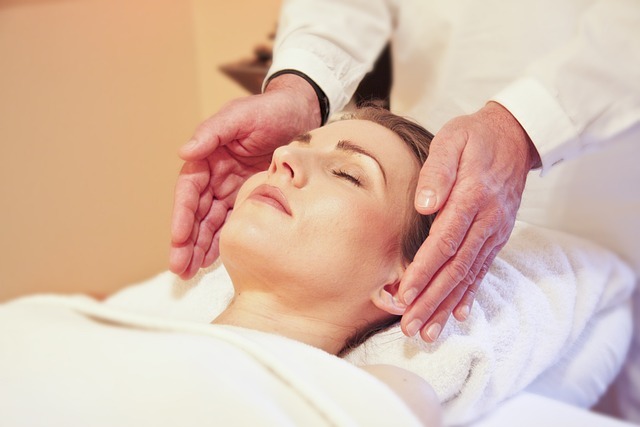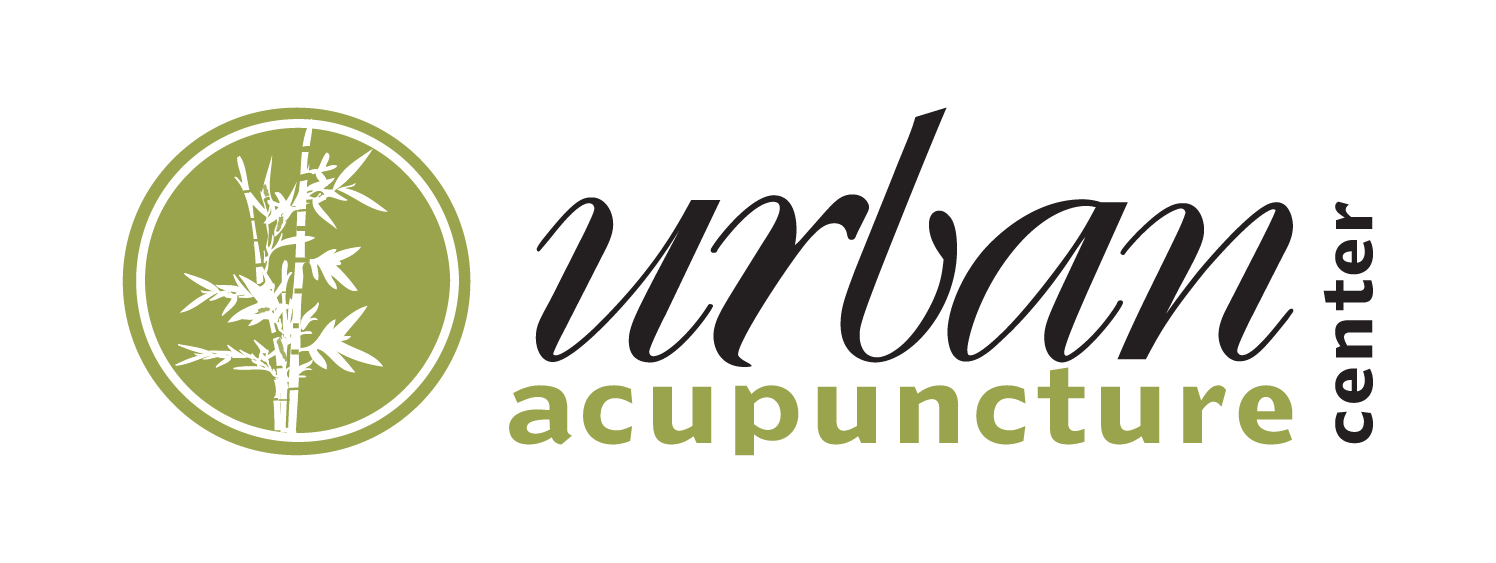by urban-acupuncture | Feb 5, 2024 | Massage Therapy
Who should consider Rolfing Structural Integration?
 Rolfing® Structural Integration, renowned for its holistic approach to body alignment and well-being, offers a myriad of benefits for diverse individuals seeking improved physical alignment, enhanced mobility, and overall wellness. Who might find Rolfing beneficial? Let’s delve into the various groups and individuals who can reap the rewards of this transformative practice.
Rolfing® Structural Integration, renowned for its holistic approach to body alignment and well-being, offers a myriad of benefits for diverse individuals seeking improved physical alignment, enhanced mobility, and overall wellness. Who might find Rolfing beneficial? Let’s delve into the various groups and individuals who can reap the rewards of this transformative practice.
Athletes and Fitness Enthusiasts
For athletes and fitness aficionados, optimizing physical performance and preventing injuries are paramount. Rolfing offers a means to address imbalances, enhance flexibility, and improve movement patterns. By realigning the body’s structure and releasing tension, Rolfing can support athletes in achieving greater efficiency, mobility, and resilience, thereby aiding in injury prevention and enhancing overall athletic performance.
Individuals with Chronic Pain or Discomfort
Those struggling with chronic pain or discomfort stemming from conditions like back pain, repetitive strain injuries, or postural imbalances often find relief through Rolfing. By releasing tension and realigning the body, Rolfing aims to alleviate chronic pain, offering individuals a pathway to reduce discomfort and enhance their quality of life.
Individuals Seeking Improved Posture and Alignment
In today’s sedentary lifestyle, many individuals experience postural issues due to prolonged sitting or poor ergonomic habits. Rolfing sessions, particularly the Ten-Series, focus on restoring optimal alignment, correcting postural imbalances, and fostering a more balanced and upright posture.
Individuals Recovering from Injuries or Surgery
Those in the recovery phase post-injury or surgery can benefit from Rolfing as part of their rehabilitation process. By addressing scar tissue, releasing tension, and enhancing mobility, Rolfing can support the body’s natural healing process, aiding in restoring range of motion and functional movement.
Stress Management and Emotional Well-being Seekers
Beyond its physical benefits, Rolfing can contribute to emotional well-being and stress reduction. The release of physical tension during Rolfing sessions often leads to a profound sense of relaxation, reducing stress and promoting emotional balance. Many individuals report feeling more centered and grounded after Rolfing sessions, fostering a deeper mind-body connection.
Anyone Interested in Holistic Wellness and Self-Discovery
Individuals seeking a holistic approach to wellness and self-discovery can benefit from Rolfing. This practice goes beyond physical alignment, often leading to heightened self-awareness, improved body consciousness, and a deeper understanding of one’s movement patterns and habits.
Conclusion: Embracing Rolfing as a Path to Holistic Well-being
Rolfing Structural Integration offers a holistic approach to enhancing physical alignment, mobility, and overall well-being. Whether you’re an athlete aiming to improve performance, someone seeking relief from chronic pain, or simply pursuing a more balanced and aligned body, Rolfing offers a transformative path towards holistic wellness and self-discovery. By addressing the unique needs of various individuals, Rolfing stands as a valuable tool on the journey toward optimal health and vitality.
Contact Urban Acupuncture Center in Columbus, OH For More Information
For more information about how acupuncture, massage therapy and other alternative healing treatments can help you, please contact the Urban Acupuncture Center Board Certified Licensed Acupuncturist’s team at Indianola Ave, Columbus, Ohio (Clintonville) (614) 725-2488 or click here. Taking new patients in and around greater Columbus, Ohio.
by urban-acupuncture | Feb 5, 2024 | Holistic Health, Massage
Can Reiki Help You Sleep?
 Sleep is the cornerstone of our well-being, yet for many, achieving a restful night remains elusive. Enter Reiki, an ancient healing technique that’s gaining recognition for its potential to significantly improve sleep quality. In a world where stress and restlessness often hinder peaceful slumber, Reiki emerges as a promising avenue for enhancing sleep and overall wellness.
Sleep is the cornerstone of our well-being, yet for many, achieving a restful night remains elusive. Enter Reiki, an ancient healing technique that’s gaining recognition for its potential to significantly improve sleep quality. In a world where stress and restlessness often hinder peaceful slumber, Reiki emerges as a promising avenue for enhancing sleep and overall wellness.
What is Reiki, you may ask? Rooted in Japanese tradition, Reiki revolves around the concept of energy healing. Practitioners channel healing energy through their hands, promoting balance and harmony within the body. By restoring the flow of vital energy, known as “ki” or “qi,” Reiki aims to alleviate physical, emotional, and spiritual imbalances, fostering a profound sense of relaxation and well-being.
The transformative effects of Reiki on sleep are multifaceted. Here’s how this gentle yet powerful practice can positively impact your nightly rest:
Stress Reduction and Relaxation
Stress often acts as a primary culprit behind sleep disturbances. Reiki serves as a potent stress-relieving tool, promoting relaxation by calming the mind and soothing the nervous system. Through gentle touch or even from a distance, Reiki facilitates a deep sense of tranquility, unwinding the tension accumulated throughout the day.
Balancing Energy Flow
Imbalances in our body’s energy flow can disrupt sleep patterns. Reiki sessions work to restore this equilibrium, clearing energy blockages that might contribute to restlessness. By realigning the body’s energy centers, Reiki enables a smoother flow of vital life force energy, fostering a sense of inner harmony conducive to restful sleep.
Emotional Healing and Calmness
Emotional turmoil often manifests as sleep disturbances. Reiki’s holistic approach not only addresses physical ailments but also tackles emotional distress. By addressing emotional imbalances and promoting a sense of calmness, Reiki helps alleviate anxiety, depression, and other emotional burdens that may interfere with peaceful sleep.
Enhancing Mindfulness and Awareness
Reiki encourages mindfulness and self-awareness, crucial components for establishing healthy sleep habits. Through regular sessions, individuals often develop a deeper connection with their bodies, recognizing signals of fatigue and relaxation cues that aid in falling asleep more easily.
Embracing Reiki as a means to enhance sleep quality is increasingly popular, complementing conventional sleep therapies and practices. While its efficacy varies from person to person, many individuals report significant improvements in sleep patterns after engaging in Reiki sessions.
Incorporating Reiki into your bedtime routine might involve seeking sessions from certified Reiki practitioners, practicing self-Reiki techniques, or exploring guided meditations that incorporate Reiki principles.
As we navigate the complexities of modern life, prioritizing restorative practices like Reiki becomes imperative for achieving optimal sleep and holistic well-being. By harnessing the gentle yet profound healing energies of Reiki, a good night’s sleep may no longer remain an elusive dream but a restorative reality.
Contact Urban Acupuncture Center in Columbus, OH For More Information
For more information about how acupuncture, massage therapy and other alternative healing treatments can help you, please contact the Urban Acupuncture Center Board Certified Licensed Acupuncturist’s team at Indianola Ave, Columbus, Ohio (Clintonville) (614) 725-2488 or click here. Taking new patients in and around greater Columbus, Ohio.
by urban-acupuncture | Feb 1, 2024 | Holistic Health
What is Reiki?
Reiki is a Japanese healing technique that focuses on channeling energy to promote relaxation, reduce stress, and enhance overall well-being. The word “Reiki” translates to “universal life energy” or “spiritually guided life force energy.” Developed by Mikao Usui in the early 20th century, Reiki is based on the belief that a practitioner can transfer healing energy through their palms to the recipient by laying hands on or just above the body.
 The practice involves a gentle, non-invasive approach where the practitioner acts as a conduit for the flow of energy, aiming to balance the recipient’s energy fields and facilitate the body’s natural healing abilities. Reiki is often used as a complementary therapy alongside conventional medicine to promote relaxation, reduce pain, and alleviate emotional distress. It’s commonly performed with the recipient lying down fully clothed on a massage table or sitting in a comfortable position.
The practice involves a gentle, non-invasive approach where the practitioner acts as a conduit for the flow of energy, aiming to balance the recipient’s energy fields and facilitate the body’s natural healing abilities. Reiki is often used as a complementary therapy alongside conventional medicine to promote relaxation, reduce pain, and alleviate emotional distress. It’s commonly performed with the recipient lying down fully clothed on a massage table or sitting in a comfortable position.
During a Reiki session, practitioners place their hands on specific parts of the body or hold them slightly above, focusing on areas where energy flow might be blocked or disrupted. The recipient might experience sensations of warmth, tingling, or relaxation during the session, though experiences can vary widely.
Reiki is not associated with any specific religion or belief system, making it accessible and adaptable across different cultural and spiritual backgrounds. Its primary goal is to encourage relaxation, enhance energy levels, and promote holistic well-being, encompassing physical, emotional, mental, and spiritual aspects of health.
Ways Reiki Can Help You Reduce Stress
Reiki is often sought after as a means to alleviate stress. In this article, I’ll approach this topic differently by highlighting various ways in which Reiki aids individuals daily in managing stress. Reiki’s multidimensional approach targets stress from multiple angles simultaneously, compounding its positive effects.
Here are seven ways we have seen Reiki help individuals manage stress, with each point exerting its influence in conjunction with others rather than in isolation.
Inducing Deep Relaxation
Reiki typically induces profound relaxation. It effectively balances the body and mind, shifting individuals from a heightened state of stress to a more relaxed state. Physical changes often accompany a Reiki session, such as the release of tension, evident through a shift from stress breathing to relaxed diaphragmatic breathing, and the easing of shoulder or jaw tension.
Cultivating Internal Calmness
Reiki fosters an enduring internal calmness. This sense of calmness usually lasts hours or even days after the initial treatment, progressively becoming the norm with subsequent sessions. Clients often report increased stress tolerance and reduced sensitivity to previously overwhelming stressors.
Restoring Internal Balance
Reiki aims to balance internal disruptions, dissipating chronic tension or stress within the body. By addressing energetic imbalances, it clears blockages, promoting overall well-being. Emotional stress stored energetically within the body finds release through Reiki, leading to a powerful positive impact.
Cultivating Inner Peace
Reiki propels individuals toward greater inner peace. It brings about mood improvements, increased patience, and a reduction in worries, fostering a more serene disposition.
Enhancing Sleep Quality
Reiki contributes to improved sleep quality. Many find their sleep significantly enhanced after Reiki sessions, reducing an essential stress factor on the body.
Clarity and Resolving Conflict
Deeper Reiki treatments often evoke enhanced clarity in thought and intuitive awareness. This clarity assists in identifying root causes of internal stress, resolving conflicts, and guiding individuals toward a more fulfilling life path.
Encouraging Personal Growth
Moreover, Reiki can foster personal growth by expanding self-awareness and fostering emotional release, leading to inner harmony and resilience.
Contact Urban Acupuncture Center in Columbus, OH For More Information
For more information about how acupuncture, massage therapy and other alternative healing treatments can help you, please contact the Urban Acupuncture Center Board Certified Licensed Acupuncturist’s team at Indianola Ave, Columbus, Ohio (Clintonville) (614) 725-2488 or click here. Taking new patients in and around greater Columbus, Ohio.
by urban-acupuncture | Jan 5, 2024 | Acupuncture
Acid Reflux and Heartburn Treatment
 Acid reflux, often referred to as heartburn, stands as the most prevalent symptom of Gastroesophageal Reflux Disease (GERD). This chronic condition involves the regurgitation of stomach contents into the esophagus, which irritates the esophageal lining and results in a burning sensation in the chest, among other symptoms.
Acid reflux, often referred to as heartburn, stands as the most prevalent symptom of Gastroesophageal Reflux Disease (GERD). This chronic condition involves the regurgitation of stomach contents into the esophagus, which irritates the esophageal lining and results in a burning sensation in the chest, among other symptoms.
Statistics indicate that at least 40% of adults experience heartburn symptoms at some point in their lives, with up to 20% encountering heartburn weekly. As a result, GERD ranks among the most commonly diagnosed digestive disorders in the United States. In cases of frequent GERD symptoms, medical practitioners typically resort to proton pump inhibitors (PPIs) and lifestyle modifications to manage acid reflux. Nevertheless, many patients continue to experience symptoms beyond chest pain and regurgitation, often accompanied by other common digestive complaints such as dyspepsia (indigestion), Irritable Bowel Syndrome (IBS), and stomach ulcers. This necessitates further investigation and treatment.
Traditional Chinese Medicine (TCM) and acupuncture provide an alternative approach to address acid reflux and various other digestive disorders. Acupuncture has demonstrated superior efficacy in relieving heartburn compared to conventional medications. Acupuncture, combined with natural herbal remedies, offers lasting relief from GERD symptoms by addressing the root cause of the digestive disorder.
Symptoms of Acid Reflux
Gastroesophageal reflux disease primarily involves the backward flow of digestive fluids into the esophagus. When this happens frequently over time, it can lead to esophageal damage and various other complications. The sensation commonly known as “heartburn” is the most recognizable symptom of acid reflux, although some individuals with GERD may not experience this burning sensation. GERD can involve non-acidic digestive fluids and might not induce the pain associated with acidic stomach secretions. Typical GERD symptoms encompass:
- Chest burning, exacerbated after meals and when lying down
- Chest pain, even in the absence of recent meals
- Difficulty in swallowing
- Regurgitation of food or sour-tasting liquid
- Excessive salivation
- Sensation of a lump in the throat
- Abdominal bloating and excessive gas
- Intolerance of specific foods and beverages
- Persistent bad breath or a constant sour taste in the mouth
- Hoarse voice or laryngitis
- Frequent throat clearing
- Chronic dry, sore throat
- Burning sensation in the mouth
- Gum inflammation and other dental issues
Acid reflux symptoms can coincide with stomach discomfort, stomachache, and abdominal cramps. These symptoms might be indicative of stomach ulcers, gastritis, or dyspepsia, as it is common for multiple digestive problems to coexist.
Causes of Heartburn
While there is no single, distinct cause of GERD, it is frequently associated with the functioning of the lower esophageal sphincter (LES), a muscular ring that separates the esophagus from the stomach. Under normal circumstances, the LES permits the passage of chewed food into the stomach, subsequently closing to prevent stomach contents from flowing upward. However, when this sphincter is relaxed or weakened, stomach contents can breach this barrier. Factors contributing to LES dysfunction may involve pregnancy, excess abdominal weight exerting upward pressure on the organs, or a hiatal hernia, which results in the upper portion of the stomach and LES protruding through the diaphragm into the chest area.
Heartburn can be triggered by the consumption of spicy or acidic foods, smoking or exposure to second-hand smoke, as well as the use of aspirin, ibuprofen, or specific blood pressure medications. If avoiding these triggers does not yield results, patients may be referred to a gastroenterologist for diagnostic testing to identify the underlying issue. Endoscopy of the upper gastrointestinal tract can reveal the presence of a hiatal hernia, stomach ulcers, or esophageal damage.
Treatment for Acid Reflux
To alleviate heartburn, many individuals turn to over-the-counter antacids such as Tums, Rolaids, Maalox, or Mylanta. While these products can provide temporary relief from the burning sensation, excessive antacid use can paradoxically exacerbate the problem by increasing stomach acid production. Histamine-2 (H2) blockers such as Pepcid and Zantac reduce acid production, but they do not offer a universal solution. Proton pump inhibitors (PPIs) like Prevacid, Prilosec, and Nexium block the production of stomach acids. While they can promote ulcer healing and reduce acid reflux, they are associated with several downsides. PPIs are costly, leading to long-term daily usage for many individuals. They also inhibit specific enzymes, which may negatively interact with common heart disease medications. PPIs may diminish calcium absorption in the digestive tract, potentially leading to weaker bones and an increased fracture risk. These medications can affect kidney function and elevate stomach bacteria levels. If bacteria from the stomach reaches the chest area due to reflux, it can enter the lungs, heightening the risk of pneumonia and other respiratory infections.
Asthma and GERD are frequently interconnected conditions, as acid reflux can irritate tissues triggering asthma attacks. In turn, asthma attacks can weaken the LES, causing reflux. Some asthma medications, such as theophylline, may also provoke heartburn. Patients with both GERD and asthma need to manage both conditions simultaneously.
Prokinetics, a category of prescribed medications, can expedite stomach emptying, reducing the likelihood of reflux. However, they may introduce side effects like nausea, diarrhea, fatigue, anxiety, and depression, while also posing contraindications with other medications.
Conventional treatments predominantly target stomach acids as the cause of heartburn, with no established approach to restore the normal LES function. Research suggests that acupuncture treatment, in addition to regulating gastric secretions, may help strengthen the motor function of the LES.
Acupuncture and Herbs for GERD
Traditional Chinese Medicine (TCM) is a holistic healthcare system based on over 3,000 years of documented research and practice. TCM views health problems as imbalances stemming from blocked Qi (life force energy) in the body. Disorders of the organ systems often result from emotional disturbances. According to TCM, acid reflux and other digestive issues are influenced by stress and anxiety. Persistent feelings of worry, frustration, and anger affect the liver, spleen, and stomach, elevating acidity and inflammation within these organ systems.
An unsettled stomach and chest pain are the results of Qi rising inappropriately, leading to acid reflux. Acupuncture treatment for GERD concentrates on reducing anxiety and reestablishing the downward flow of Qi while enhancing the function of the stomach and LES.
TCM employs herbal formulations, developed over centuries, to support the healthy function of internal organs on a deep nutritional level. Herbal remedies in TCM work to increase healthy mucus in the esophagus, soothing and healing damage caused by stomach acids.
Additionally, acupuncturists typically inquire about dietary habits, as certain foods can contribute to the problem. Collaborating with a qualified TCM practitioner to devise personalized lifestyle adjustments is crucial for resolving heartburn, stomach pain, and indigestion.
TCM for Heartburn During Pregnancy
Many pregnant women experience acid reflux due to hormonal changes that relax the LES, preventing it from closing completely. As pregnancy progresses, the uterus exerts pressure on the digestive organs and diaphragm. In TCM, pregnancy-related heartburn may be attributed to “stomach fire,” characterized by an intense thirst for cold beverages. Digestive stagnation can result in belching and bloating. Acupuncture treatments can be tailored to address these conditions, enhancing digestive flow and hormone balance. Acupuncture can also provide relief if a baby shows signs of colic or infant reflux.
Top 10 Tips for GERD Diet and Lifestyle
- Embrace a high-fiber diet, including oatmeal and cruciferous vegetables like cauliflower and broccoli.
- Avoid citrus fruits, such as oranges, lemons, limes, grapefruits, and favor melons, bananas, apples, and pears. Acidic foods like tomatoes and pineapple, along with onions and garlic, should be avoided. Citric acid, a common food additive, is best omitted.
- Consume multiple small meals throughout the day to prevent stomach distention.
- Steer clear of fatty foods, particularly fried foods, dairy products, and marbled meats, as they linger in the stomach for extended periods.
- Minimize alcohol consumption, especially red wine.
- Avoid caffeinated beverages, including coffee, tea, and soda, as they can trigger heartburn.
- Opt for ginger or chamomile tea, both of which are soothing for the stomach. Green tea can stimulate the lower esophageal sphincter positively.
- Refrain from lying down immediately after eating and allow at least two hours before going to bed after a meal.
- Exercise caution with workout positions that affect the abdomen, as they may trigger reflux. These positions include crunches, sit-ups, leg lifts, headstands, and downward dog poses. Additionally, it is best to avoid exercising with a full stomach.
- Elevate your head above your feet while sleeping. A wedge-shaped foam lift offers superior support compared to stacking pillows or attaching risers to the bed’s headrest.
Seeking Acupuncture for Heartburn Relief
Acupuncture is a secure and effective remedy for heartburn. If you or someone you know is struggling with GERD, acid reflux, stomach pain, or ulcer symptoms, consider consulting an acupuncturist in your vicinity to schedule an initial consultation.
Contact Urban Acupuncture Center in Columbus, OH For More Information
For more information about how acupuncture, massage therapy and other alternative healing treatments can help you, please contact the Urban Acupuncture Center Board Certified Licensed Acupuncturist’s team at Indianola Ave, Columbus, Ohio (Clintonville) (614) 725-2488 or click here. Taking new patients in and around greater Columbus, Ohio.
by urban-acupuncture | Jan 1, 2024 | Acupuncture
Acupuncture for Alleviating Gas and Bloating
 Bloating, characterized by a sensation of fullness and tightness in the abdomen, is often attributed to excess gas. It can be a distressing condition, particularly when accompanied by severe abdominal pain. People may observe a swollen or distorted appearance of their belly and endure sharp abdominal discomfort. However, in many instances, the cause may be as straightforward as indigestion or an accumulation of gas in the stomach and bowels.
Bloating, characterized by a sensation of fullness and tightness in the abdomen, is often attributed to excess gas. It can be a distressing condition, particularly when accompanied by severe abdominal pain. People may observe a swollen or distorted appearance of their belly and endure sharp abdominal discomfort. However, in many instances, the cause may be as straightforward as indigestion or an accumulation of gas in the stomach and bowels.
Bloating typically presents with the following symptoms:
- Pain
- Excessive gas (flatulence)
- Frequent burping or belching
- Audible abdominal rumbling or gurgling
Abdominal bloating has the potential to disrupt daily activities and social engagements, affecting both adults and children.
Causes of Bloating
Bloating can stem from various medical conditions, including:
- Irritable bowel syndrome (IBS)
- Inflammatory bowel diseases like ulcerative colitis or Crohn’s disease
- Other functional gastrointestinal disorders (FGIDs)
- Heartburn
- Food intolerance
- Weight gain
- Hormonal fluctuations, particularly in women
- Giardiasis (intestinal parasite infection)
- Eating disorders such as anorexia nervosa or bulimia nervosa
- Mental health factors like stress, anxiety, and depression
- Some medications
These conditions introduce factors that contribute to gas and bloating, such as bacterial overgrowth or deficiency in the gastrointestinal tract, gas accumulation, altered gut motility, impaired gas transit, abnormal abdominal reflexes, visceral hypersensitivity, food and carbohydrate malabsorption, and constipation.
Serious Causes of Bloating
Abdominal bloating can also serve as a symptom of several severe conditions, including:
- Pathologic fluid accumulation in the abdominal cavity (ascites) linked to cancer (e.g., ovarian cancer), liver disease, kidney failure, or congestive heart failure
- Celiac disease, or gluten intolerance
- Pancreatic insufficiency, resulting in impaired digestion due to insufficient production of digestive enzymes by the pancreas
- Perforation of the gastrointestinal tract, leading to the release of gas, normal GI tract bacteria, and other contents into the abdominal cavity
Symptoms of Bloating
Common symptoms of bloating encompass stomach pain, discomfort, and excessive gas. Frequent belching or burping, as well as abdominal rumbling or gurgling, may also manifest.
In cases of severe bloating, additional worrisome symptoms may include:
- Blood in the stool
- Noticeable unintended weight loss
- Vaginal bleeding (between menstrual periods or in postmenopausal women)
- Nausea
- Vomiting
- Diarrhea
- Worsening heartburn
- Fever (indicative of infection)
Diagnosis
The underlying cause of bloating can generally be determined through:
- Physical examinations
- Blood tests, such as a complete blood count (CBC)
- Stool analysis
- Urine analysis
- Fluoroscopic imaging
- X-rays
- CT scans
Prevention
Numerous strategies can help prevent and mitigate bloating:
- Avoid foods known to induce gas, including cabbage, Brussels sprouts, turnips, beans, and lentils.
- Refrain from chewing gum.
- Abstain from using straws while drinking.
- Reduce or eliminate the consumption of carbonated beverages (e.g., soda).
- Minimize the intake of foods and drinks containing fructose or sorbitol, artificial sweeteners frequently found in sugar-free products.
- Consume meals at a slower pace to reduce the risk of swallowing air. Eating more slowly may also promote a sense of fullness sooner, aiding in the avoidance of overeating, which can lead to bloating.
- Enhance dietary fiber intake to prevent constipation. If dietary fiber alone does not suffice, consider the use of fiber supplements.
- If dairy products trigger gas and bloating, consider excluding them from your diet.
- Quit smoking
Risk Factors
Individuals experiencing discomfort, diarrhea or constipation, changes in clothing fit, and increased smelly flatulence may be at risk.
Treatment for Bloating
Several measures can be taken to address and alleviate bloating:
- Eating Slowly: Consuming food rapidly results in increased air ingestion, leading to gas and bloating. Eating slowly can help reduce bloating and foster a sense of fullness, preventing overindulgence that may exacerbate bloating.
- Dietary Adjustments: If you identify specific foods as triggers for bloating, consider reducing or eliminating them from your diet. Common culprits include wheat, beans, lentils, garlic, onions, asparagus, as well as dairy products that contain lactose, a sugar that some individuals have difficulty digesting.
- Antacids: Antacids can facilitate the passage of gas through the digestive tract, reducing bloating. However, antacids are primarily effective for bloating induced by food.
- Antidepressants: Certain antidepressants can influence the body’s response to gas, preventing overreactions to its presence.
- Reduced Fiber Intake: Excessive fiber consumption is a prevalent cause of bloating, as the body cannot fully digest fiber. Moderation is key when it comes to fiber intake.
- Over-the-Counter Gas Products: Various over-the-counter products may help diminish gas levels and alleviate bloating.
Effectiveness of Acupuncture to Treat Bloating & Gas
Acupuncture is a treatment approach that goes beyond symptom management. Many have demonstrated the effectiveness of acupuncture in addressing indigestion and bloating, asserting that “Acupuncture is effective in the treatment of functional dyspepsia.” Compared to antacids, acupuncture offers enhanced efficacy. This is because acupuncture targets not only the symptom of bloating or digestive dysfunction but also addresses the root cause, which can, in some cases, be stress. Acupuncture shows promise as a therapy for individuals suffering from bloating.
Mechanism of Acupuncture
Acupuncture is grounded in the concept of maintaining the free flow of qi, the body’s natural energy. Acupuncture protocols combine tonification of the digestive system through the stomach, spleen, and liver meridians with relaxation of the mind and body through calming points. In acupuncture, needles are employed to release blockages of this energy (qi) that contribute to medical problems and even weight gain. Practitioners examine the “meridians” throughout the body to enhance qi circulation, and these meridians represent pathways for energy flow. The needles are inserted into seemingly unrelated body parts because they target both local points, which are areas from where pain radiates, and distal points, corresponding to remote regions of the body like extremities with numerous nerve endings. The stimulation of these points influences the stomach, spleen, and liver meridians, aiding in the movement of energy in the abdomen.
Contact Urban Acupuncture Center in Columbus, OH For More Information
For more information about how acupuncture, massage therapy and other alternative healing treatments can help you, please contact the Urban Acupuncture Center Board Certified Licensed Acupuncturist’s team at Indianola Ave, Columbus, Ohio (Clintonville) (614) 725-2488 or click here. Taking new patients in and around greater Columbus, Ohio.
 Rolfing® Structural Integration, renowned for its holistic approach to body alignment and well-being, offers a myriad of benefits for diverse individuals seeking improved physical alignment, enhanced mobility, and overall wellness. Who might find Rolfing beneficial? Let’s delve into the various groups and individuals who can reap the rewards of this transformative practice.
Rolfing® Structural Integration, renowned for its holistic approach to body alignment and well-being, offers a myriad of benefits for diverse individuals seeking improved physical alignment, enhanced mobility, and overall wellness. Who might find Rolfing beneficial? Let’s delve into the various groups and individuals who can reap the rewards of this transformative practice.
 Sleep is the cornerstone of our well-being, yet for many, achieving a restful night remains elusive. Enter Reiki, an ancient healing technique that’s gaining recognition for its potential to significantly improve sleep quality. In a world where stress and restlessness often hinder peaceful slumber, Reiki emerges as a promising avenue for enhancing sleep and overall wellness.
Sleep is the cornerstone of our well-being, yet for many, achieving a restful night remains elusive. Enter Reiki, an ancient healing technique that’s gaining recognition for its potential to significantly improve sleep quality. In a world where stress and restlessness often hinder peaceful slumber, Reiki emerges as a promising avenue for enhancing sleep and overall wellness. The practice involves a gentle, non-invasive approach where the practitioner acts as a conduit for the flow of energy, aiming to balance the recipient’s energy fields and facilitate the body’s natural healing abilities. Reiki is often used as a complementary therapy alongside conventional medicine to promote relaxation, reduce pain, and alleviate emotional distress. It’s commonly performed with the recipient lying down fully clothed on a massage table or sitting in a comfortable position.
The practice involves a gentle, non-invasive approach where the practitioner acts as a conduit for the flow of energy, aiming to balance the recipient’s energy fields and facilitate the body’s natural healing abilities. Reiki is often used as a complementary therapy alongside conventional medicine to promote relaxation, reduce pain, and alleviate emotional distress. It’s commonly performed with the recipient lying down fully clothed on a massage table or sitting in a comfortable position. Acid reflux, often referred to as heartburn, stands as the most prevalent symptom of Gastroesophageal Reflux Disease (GERD). This chronic condition involves the regurgitation of stomach contents into the esophagus, which irritates the esophageal lining and results in a burning sensation in the chest, among other symptoms.
Acid reflux, often referred to as heartburn, stands as the most prevalent symptom of Gastroesophageal Reflux Disease (GERD). This chronic condition involves the regurgitation of stomach contents into the esophagus, which irritates the esophageal lining and results in a burning sensation in the chest, among other symptoms. Bloating, characterized by a sensation of fullness and tightness in the abdomen, is often attributed to excess gas. It can be a distressing condition, particularly when accompanied by severe abdominal pain. People may observe a swollen or distorted appearance of their belly and endure sharp abdominal discomfort. However, in many instances, the cause may be as straightforward as indigestion or an accumulation of gas in the stomach and bowels.
Bloating, characterized by a sensation of fullness and tightness in the abdomen, is often attributed to excess gas. It can be a distressing condition, particularly when accompanied by severe abdominal pain. People may observe a swollen or distorted appearance of their belly and endure sharp abdominal discomfort. However, in many instances, the cause may be as straightforward as indigestion or an accumulation of gas in the stomach and bowels.